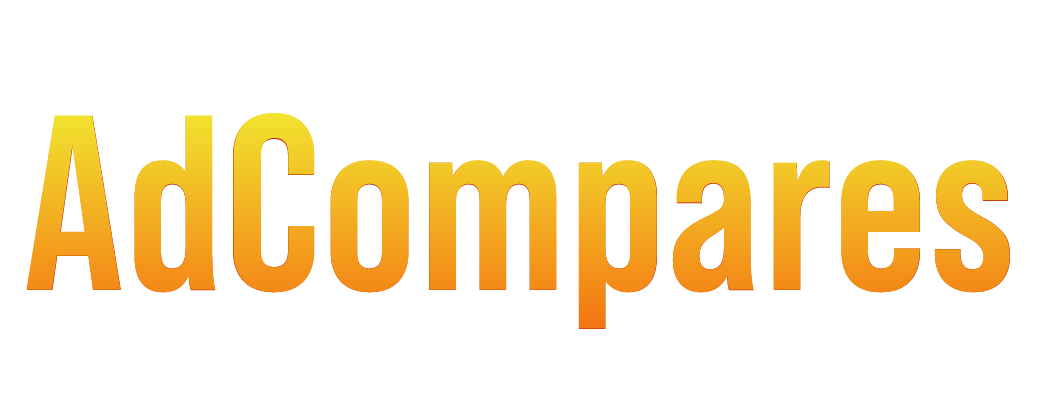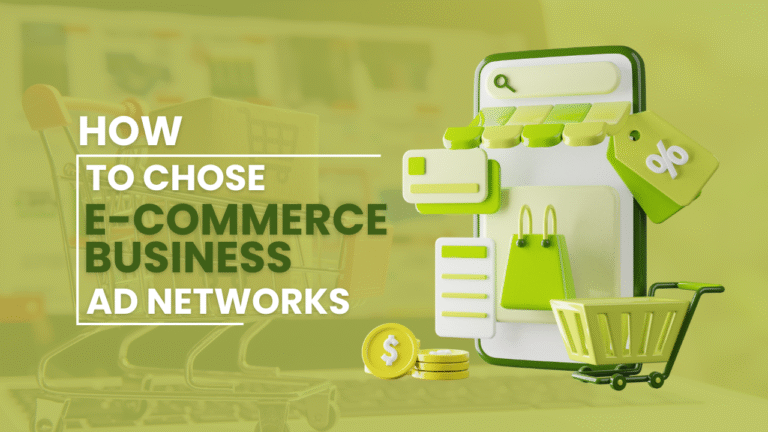In 2026, e-commerce advertising is no longer just about running ads; it’s about choosing the right ad networks that can deliver customers at every stage of the buying journey. With competition rising and consumer attention spread across multiple platforms, brands that rely on just one channel risk losing both visibility and sales. The best-performing e-commerce businesses are stacking networks, blending social, retail media, and search, to capture buyer intent from awareness all the way to conversion.
Knowing how to choose e-commerce business ad networks has therefore become a crucial skill for brands that want to scale effectively. With so many platforms offering different targeting options, pricing models, and ad formats, understanding which networks align with your goals can make the difference between steady growth and wasted ad spend. By comparing audience reach, ad performance, and monetization potential, you can select the right mix of networks to maximize visibility, conversions, and ROI in today’s competitive landscape.
What Is an E-commerce Business for Ad Networks?
E-commerce businesses rely heavily on digital channels to sell products and connect with customers. Ad networks serve as the backbone of this process, acting as the bridge between advertisers and publishers. For e-commerce brands, ad networks enable the targeting of particular audiences based on demographics, shopping behavior, and purchase intent.
By using ad networks, online businesses don’t just get ad placements—they gain performance measurement, advanced targeting, and optimization tools that maximize returns.
Why Ad Networks Matter for E-commerce
Ad networks matter because they:
- Enable precise targeting using consumer data.
- Provide scalable ad placements across websites, apps, and retail platforms.
- Offer optimization tools that improve ROAS (Return on Ad Spend).
- Drive measurable results, from impressions to conversions.
According to eMarketer (2026),retail media networks now generate 25–30% of total e-commerce ad revenue, proving their central role in shaping the future of online advertising.
Key Advertising Terms Every E-commerce Marketer Should Know
- CPM (Cost per Thousand Impressions): Price paid for every 1,000 ad views.
- CPC (Cost per Click): Cost each time a user clicks an ad.
- CPA (Cost per Acquisition): Spend required for one conversion (sale or lead).
- ROAS (Return on Ad Spend): Revenue earned per dollar spent.
- Programmatic Advertising: AI-driven automated ad buying using real-time bidding.
- Retail Media Networks: Ad platforms from retailers like Amazon, Walmart, and Target that leverage vast customer data.
How Can E-Commerce Businesses Build a Multi-Network Funnel Strategy?
Amulti-network funnel enables e-commerce businesses to capture attention at every stage of the buyer’s journey. At thetop of the funnel, platforms like TikTok Ads, YouTube Ads, and Pinterest Ads drive awareness by showcasing products to wide audiences. As customers move to theconsideration stage, Meta Ads, Google Display Ads, and Snapchat Ads help maintain engagement through targeted messaging and retargeting campaigns that nurture interest.
At theconversion stage, platforms such as Amazon Ads, Google Shopping, and Walmart Connect deliver performance-driven outcomes by converting intent into actual sales. When tracking tools and first-party data are connected across networks, businesses achieve stronger attribution and can monitor ROI with precision. This integration ensures campaigns are not only visible but also profitable across the entire funnel.
How Can E-Commerce Businesses Build a Multi-Network Funnel Strategy?
Amulti-network funnel enables e-commerce businesses to capture attention at every stage of the buyer’s journey. At thetop of the funnel, platforms like TikTok Ads, YouTube Ads, and Pinterest Ads drive awareness by showcasing products to wide audiences. As customers move to theconsideration stage, Meta Ads, Google Display Ads, and Snapchat Ads help maintain engagement through targeted messaging and retargeting campaigns that nurture interest.
At theconversion stage, platforms such as Amazon Ads, Google Shopping, and Walmart Connect deliver performance-driven outcomes by converting intent into actual sales. When tracking tools and first-party data are connected across networks, businesses achieve stronger attribution and can monitor ROI with precision. This integration ensures campaigns are not only visible but also profitable across the entire funnel.
How to Choose E-Commerce Business Ad Networks for Maximum ROI
Selecting the right ad networks for your e-commerce business requires a clear understanding of your goals, audience, and marketing budget. Start by analyzing where your potential customers spend most of their time — whether on social media, retail media platforms, or search engines. This helps you focus on networks that can reach buyers at the right stage of their journey.
Next, compare the pricing models, such as CPM (Cost Per Thousand Impressions), CPC (Cost Per Click), and CPA (Cost Per Acquisition), to see which delivers the best returns for your campaigns. Review each network’s targeting capabilities, creative formats, and tracking tools to ensure they align with your business objectives. Finally, test and measure performance regularly — optimize campaigns by shifting more budget toward high-performing networks and cutting underperforming ones. By taking a data-driven approach, you can maximize ROI and make smarter decisions when choosing e-commerce ad networks.
Top 10 Ad Networks for E-Commerce Business in 2026
Here are the top ad networks for e-commerce in 2026 that businesses can leverage to drive traffic, engagement, and sales:
- Amazon Ads
- Walmart Connect
- Target Roundel
- Kroger Precision Marketing (KPM)
- Instacart Ads
- Meta Ads (Facebook & Instagram)
- Google Ads / Google Shopping
- TikTok Ads
- Pinterest Ads
- Programmatic DSPs (AdRoll, The Trade Desk, etc.)
1. Amazon Ads
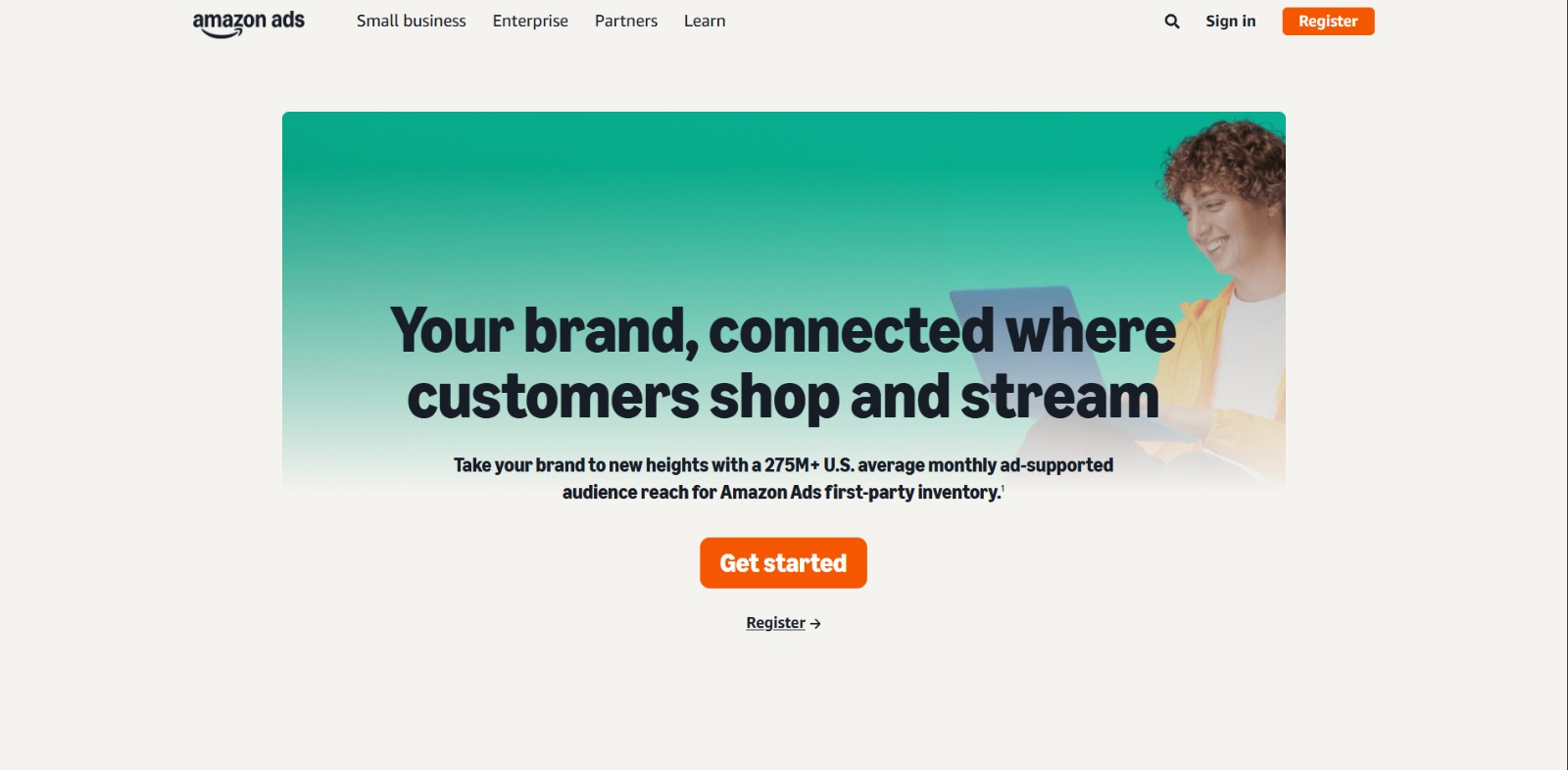
Amazon Ads is one of the most powerful platforms for e-commerce businesses because it allows brands to target customers when they are actively searching for products. Unlike social media ads that focus mainly on awareness, Amazon Ads is built around purchase intent. Ad formats include Sponsored Products, Sponsored Brands, Sponsored Display, Amazon DSP, and video ads. With millions of daily shoppers, this platform offers direct visibility to high-intent buyers, making it a strong driver of conversions and revenue growth.
Pros:
- Massive Active Audience – Over 300 million active customers worldwide ensure sellers can tap into a ready-to-buy audience.
- High Purchase Intent – Amazon users are browsing with the intent to purchase, resulting in shorter sales funnels and higher conversion rates.
- Multiple Ad Formats – Sponsored search ads, display ads, and videos provide flexibility for awareness and direct sales.
- Advanced Targeting Options – Ads can target keywords, competitor listings, product categories, and customer behavior.
- Inventory Integration – Syncing with Amazon Seller Central ensures stock, pricing, and product details update automatically.
Cons:
- Competitive Landscape – Popular categories like beauty and electronics have rising CPCs due to heavy competition.
- Complex Setup – The platform requires time, expertise, or agency support to optimize effectively.
- High CPCs in Popular Niches – Small businesses may struggle with profitability in competitive product categories.
- Limited Creative Flexibility – Ad formats are restricted, unlike social platforms, where brands can use storytelling.
- Ongoing Optimization – Campaigns need constant monitoring, bid adjustments, and keyword testing to stay profitable.
Best For: Brands selling consumer products, electronics, beauty, and lifestyle goods. Amazon Ads work best for businesses targeting high-intent shoppers actively searching for products. If you want to dominate purchase-ready audiences and leverage the power of Sponsored Products or DSP, this is the place to start.
2. Walmart Connect
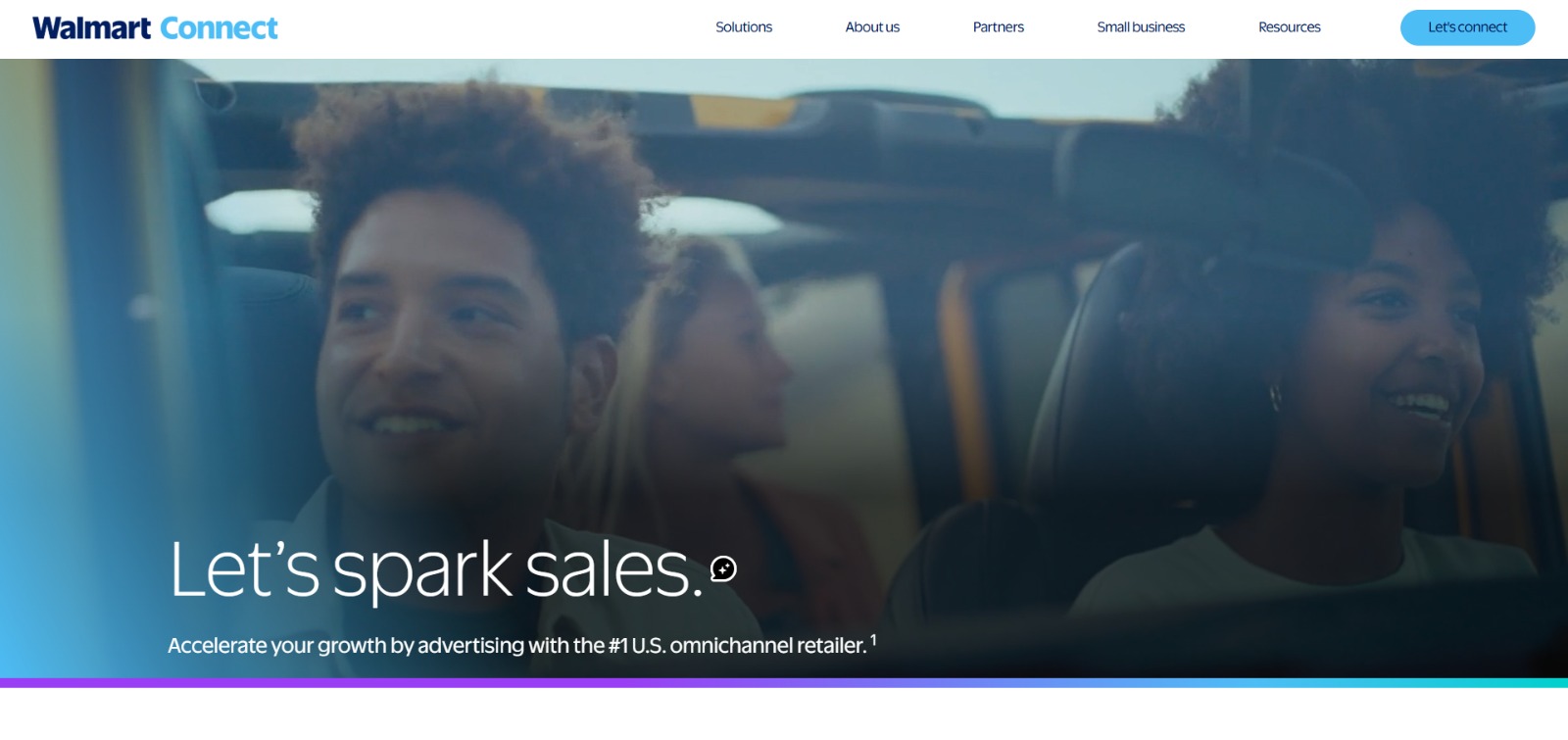
Walmart Connect is the advertising arm of Walmart, offering sponsored products, display campaigns, and native ads across its digital ecosystem. With millions of in-store and online shoppers, Walmart Connect combinesfirst-party retail data with ad placements that reach customers at the exact moment of purchase decision. It’s especially strong for brands targeting U.S. households that shop online and in physical Walmart stores.
Pros:
- High-Intent Shoppers – Walmart customers are often ready to buy, similar to Amazon shoppers.
- Retailer-First Data – Access to Walmart’s rich shopper data allows for precise targeting.
- Cross-Channel Integration – Ads can run across Walmart.com, its app, and even in-store displays.
- Diverse Ad Formats – Options include sponsored listings, display ads, and video ads.
- Strong Reporting Tools – Performance dashboards provide clear ROI insights.
Cons:
- U.S.-Centric Reach – Limited international audience compared to Amazon.
- Creative Restrictions – Fewer customization options for display creatives.
- Minimum Spend Requirements – Small businesses may find entry costs challenging.
- Limited Audience Scale – Smaller customer base compared to Amazon.
- Learning Curve – Requires technical knowledge to set up effectively.
FMCG brands, household items, and seasonal promotions. Walmart Connect is ideal for mid-to-large online stores that want to reach in-store and online shoppers with high purchase intent. Its data-driven targeting makes it especially useful for fast-moving products.
3. Target Roundel
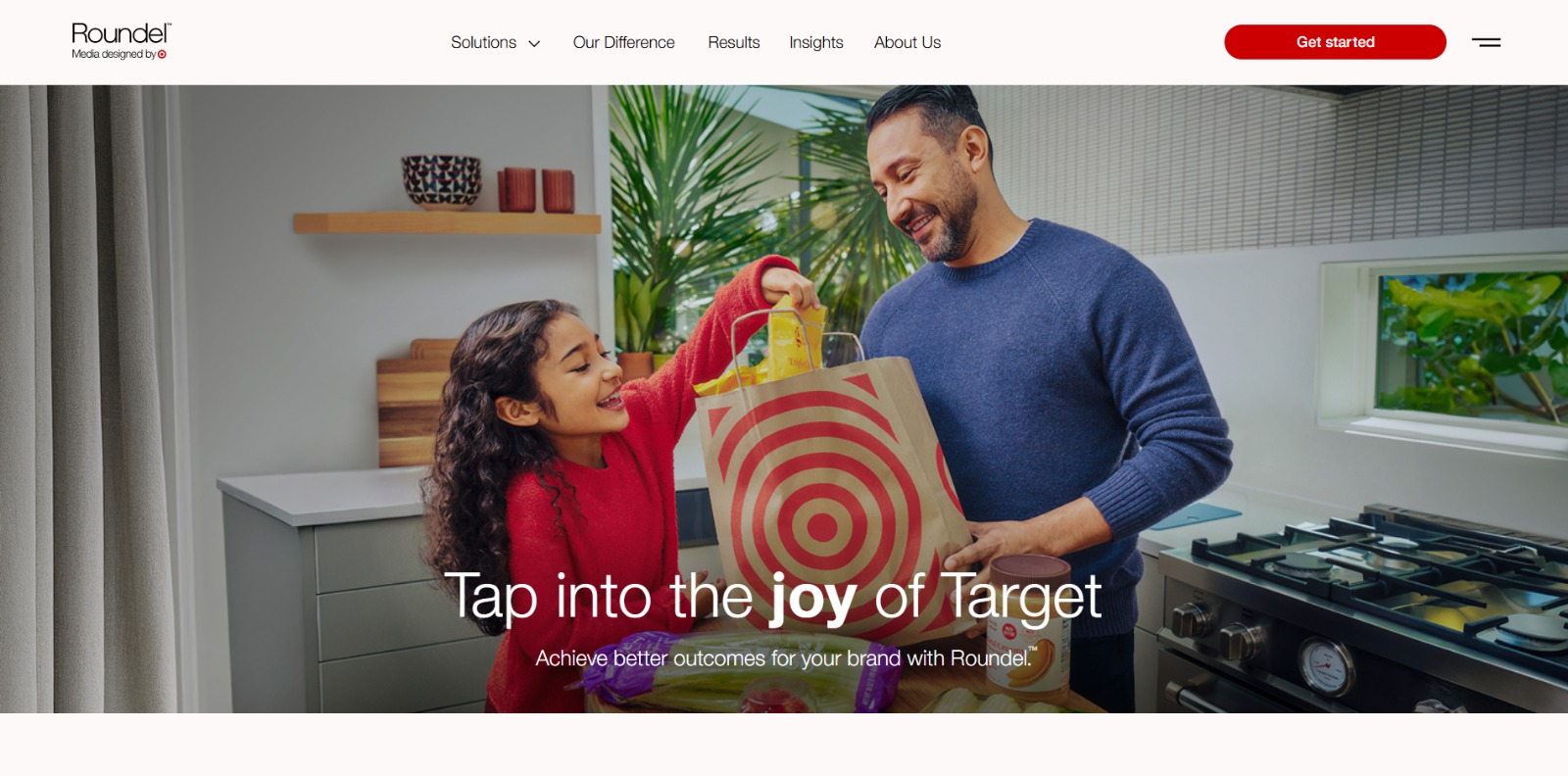
Roundel is Target’s retail media network that enables brands to connect with customers both online and in-store. It focuses onpersonalized advertising across devices, leveraging Target’s shopper data to retarget and engage customers. With a strong reputation in lifestyle, fashion, and household products, Roundel provides access to a loyal and engaged customer base.
Pros:
- Rich Audience Insights – Detailed data from Target’s in-store and online shoppers.
- Cross-Device Reach – Campaigns can target customers on web, mobile, and apps.
- High Purchase Intent – Target shoppers often search for lifestyle and retail products.
- Integration with Promotions – Ads can align with Target promotions and events.
- ROI Tracking Dashboards – Clear visibility into campaign performance.
Cons:
- Smaller Scale – Limited reach compared to Amazon and Walmart.
- Regional Limitations – Primarily a U.S.-focused audience.
- Ad Format Restrictions – Fewer creative options.
- Higher CPMs – Costs may be higher in niche categories.
- Advanced Setup Needed – Requires strong data integration for best results.
Best For: Lifestyle brands, niche retail, and fashion. Roundel is perfect for advertisers looking to combine retail data with cross-device targeting. Brands aiming to connect promotions with in-store and digital shopping experiences will benefit the most.
4. Kroger Precision Marketing (KPM)
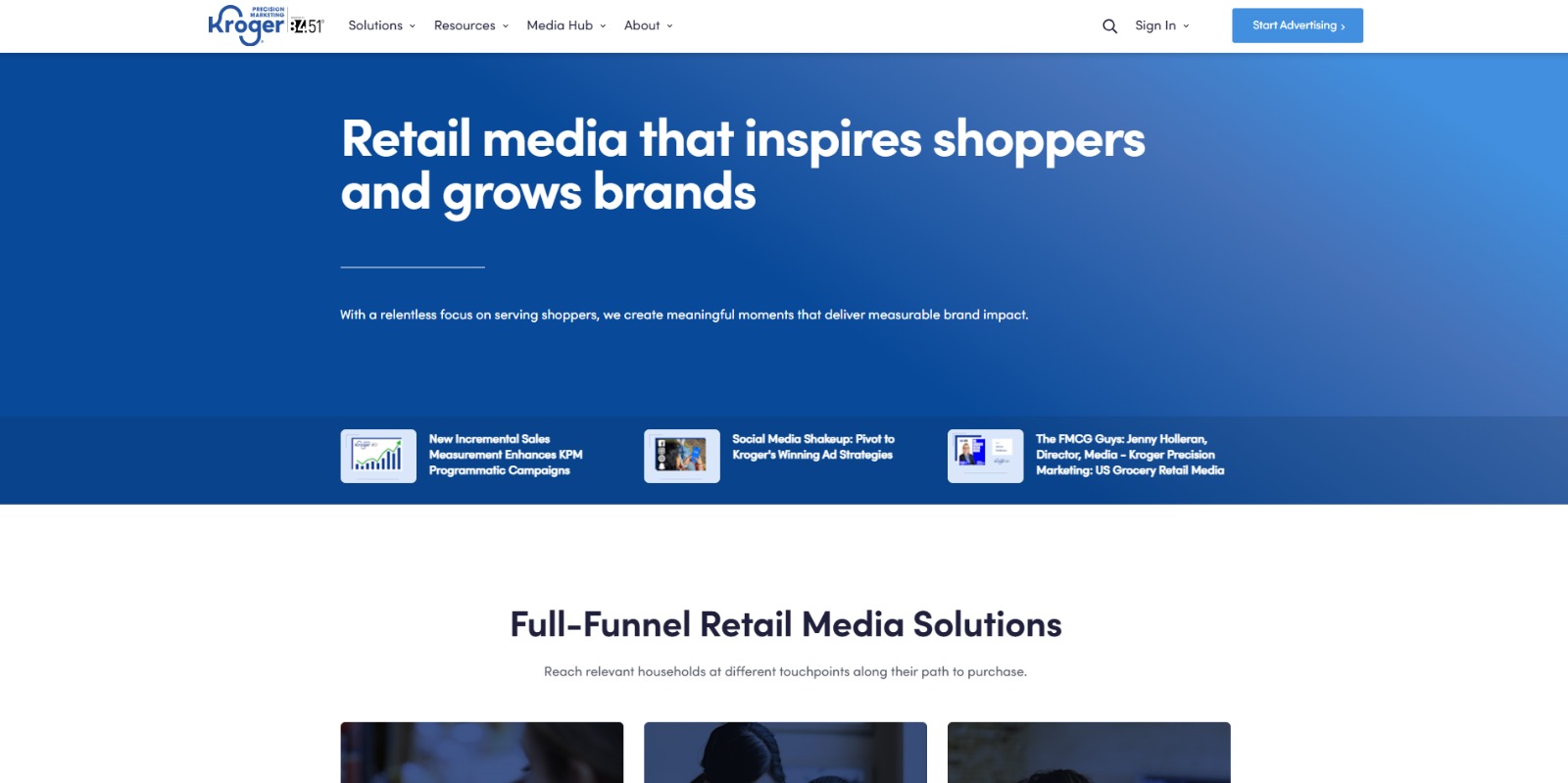
Kroger Precision Marketing specializes in grocery and FMCG advertising by usingloyalty card data, purchase history, and coupon engagement to target shoppers. With one of the largest grocery networks in the U.S., KPM is a top choice for brands that rely on repeat purchases and local market targeting.
Pros:
- High Grocery Intent – Ads reach customers who are actively purchasing household items.
- Precise Targeting – Shopper history and loyalty card data improve accuracy.
- Coupon Integration – Digital coupons boost conversions and repeat sales.
- Performance Tools – Strong measurement options for ROI tracking.
- Supports Brand Loyalty – Ideal for long-term grocery brand growth.
Cons:
- Regional Limitation – Mostly restricted to U.S. stores.
- Smaller Scale – Less reach than Walmart or Amazon.
- Creative Limitations – Few advanced formats.
- Higher Minimum Spend – Challenging for small brands.
- Setup Complexity – Needs an advanced targeting setup.
Best For: Lifestyle brands, niche retail, and fashion. Roundel is perfect for advertisers looking to combine retail data with cross-device targeting. Brands aiming to connect promotions with in-store and digital shopping experiences will benefit the most.
5. Instacart Ads
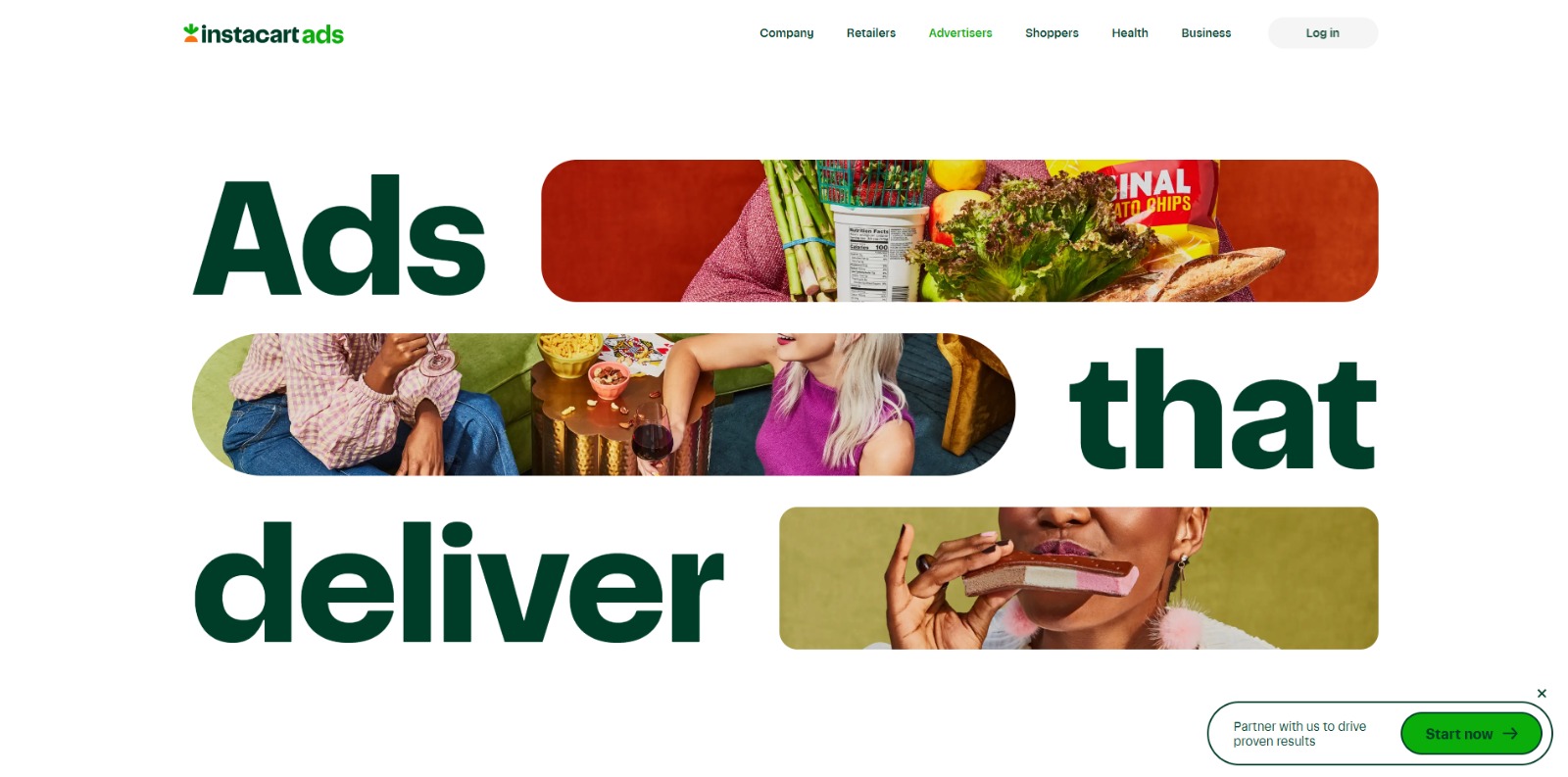
Instacart Ads is a retail media solution for grocery and FMCG brands targeting mobile-first shoppers. With millions of households relying on Instacart for weekly shopping, the platform enables brands to placesearch ads and display ads directly in the shopping app, where intent is extremely high.
Pros:
- Purchase-Ready Shoppers – Audience consists of buyers planning grocery purchases.
- Mobile-First Reach – Optimized for app users.
- Product Feed Integration – Easy catalog sync with product listings.
- Conversion Tracking – Ads tied directly to sales data.
- Promotional Support – Brands can push seasonal or discount campaigns.
Cons:
- Limited Coverage – Focused on the U.S. market.
- Restricted to FMCG/Grocery – Not suitable for all e-commerce products.
- Few Creative Formats – Mostly product placements.
- Auction-Based CPC Fluctuations – Prices rise in peak shopping seasons.
- Platform Learning Curve – Requires testing for optimization.
Best For: Grocery, beverages, and FMCG brands targeting mobile-first audiences. Instacart Ads are most effective for businesses that want to appear in front of shoppers right at the moment of purchase. Perfect for brands focused on impulse buying or replenishment products.
6. Meta Ads (Facebook & Instagram)
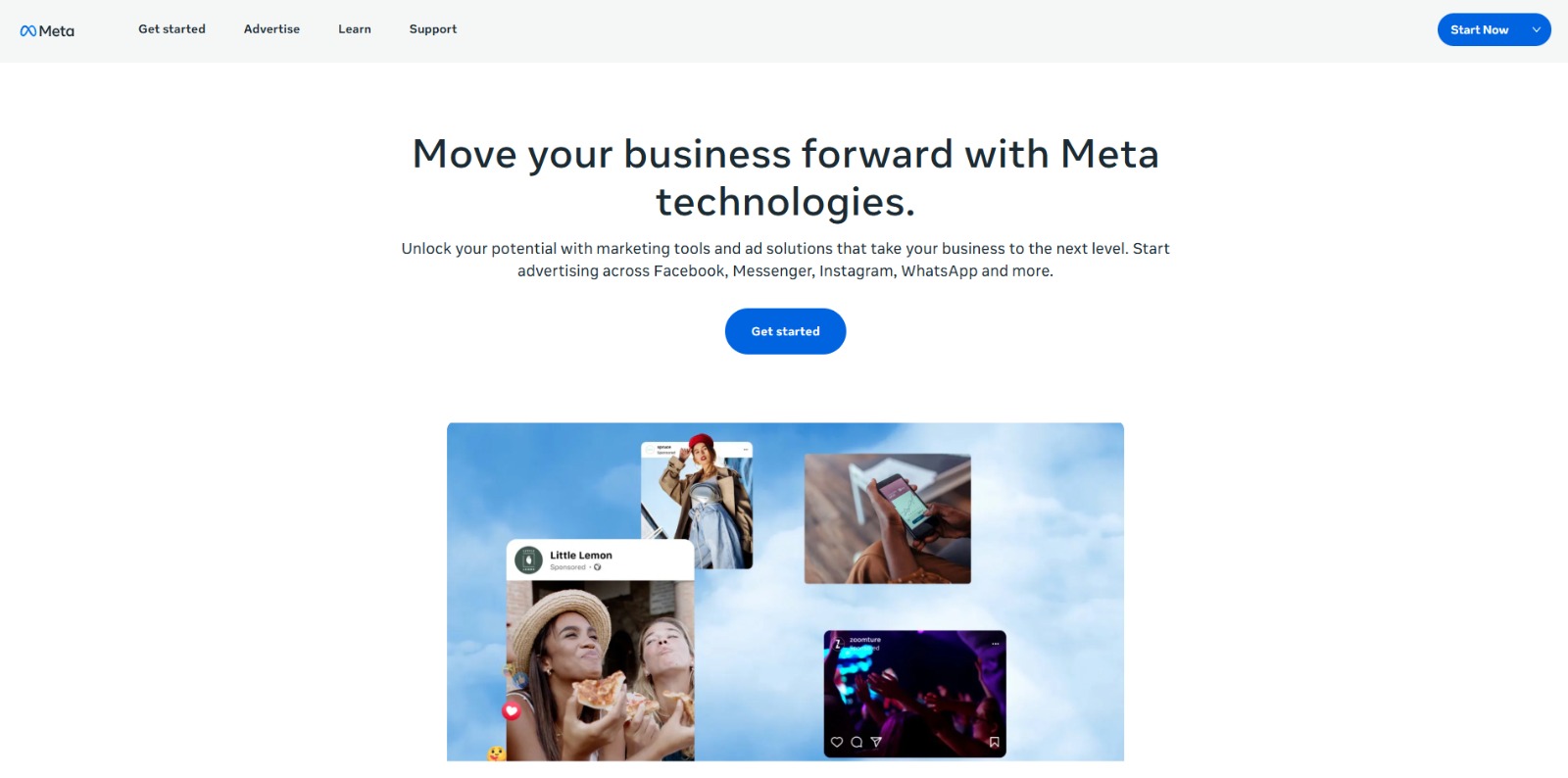
Meta Ads remain one of the largest advertising ecosystems, with billions of users across Facebook and Instagram. The platform providesfeed ads, Reels, Stories, and dynamic product ads supported by granular targeting options such as demographics, interests, and lookalike audiences. It’s especially powerful forD2C and lifestyle brands that rely on visual storytelling.
Pros:
- Massive Audience Base – Billions of global users.
- Lookalike Audiences – Advanced targeting using first-party data.
- Dynamic Retargeting – Reach shoppers who abandoned carts.
- Multiple Formats – Stories, Reels, Carousel ads, and more.
- Strong E-commerce Integrations – Shopify and WooCommerce syncing.
Cons:
- Ad Costs Rising – CPCs increasing over time.
- Privacy Restrictions – iOS 14+ has reduced tracking precision.
- Complex Multi-Campaign Reporting – Hard to analyze at scale.
- High Competition – Saturated in popular niches.
- Requires Constant Testing – Performance fluctuates without optimization.
Best For: Fashion, beauty, tech, and D2C brands. Meta Ads are best for businesses that want to scale awareness and retarget existing customers. If your goal is to run dynamic product ads or leverage lookalike audiences, Meta is still one of the strongest players.
7. Google Ads / Google Shopping
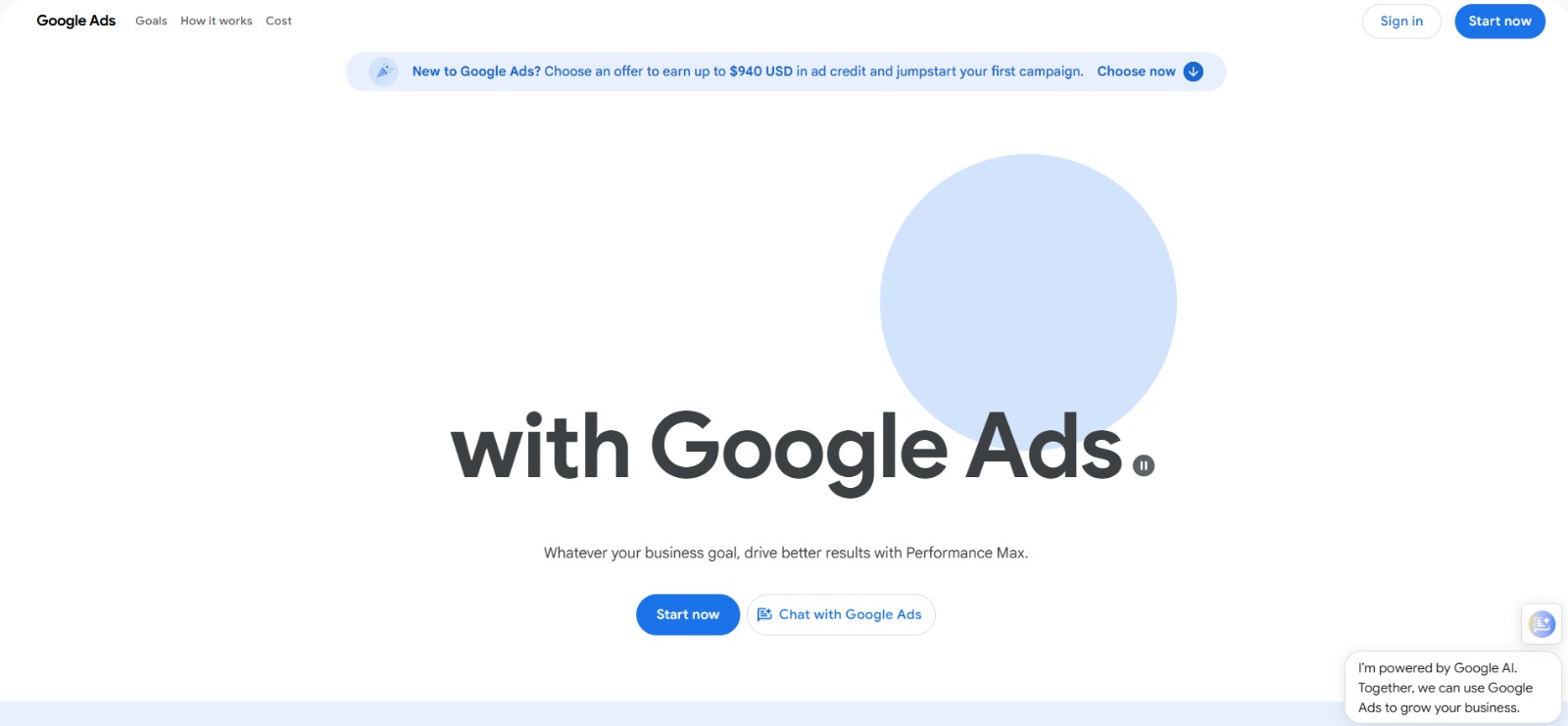
Google Ads is a core platform for e-commerce businesses, giving access tosearch, display, YouTube, and shopping campaigns. Google Shopping is particularly strong, as it displays product listings directly to users searching with purchase intent.
Pros:
- High Purchase Intent – Search users are often ready to buy.
- Multiple Campaign Types – Search, Shopping, Display, YouTube.
- Advanced Targeting & Remarketing – Keyword and audience targeting.
- Broad Global Reach – Billions of users worldwide.
- Product Feed Integration – Sync with Merchant Center for Shopping ads.
Cons:
- Highly Competitive – CPCs can be high in popular niches.
- Requires Bid Management – Advanced strategies needed for profitability.
- Learning Curve – New advertisers may struggle.
- Limited Creative Flexibility – Especially in search ads.
- Ongoing Optimization – Campaigns need daily management.
Best For: Multi-category sellers, electronics, and broad retail businesses. Google Ads works best for capturing demand-driven searches with high purchase intent. Ideal for advertisers who want to combine search, display, and shopping campaigns in one strategy.
8. TikTok Ads
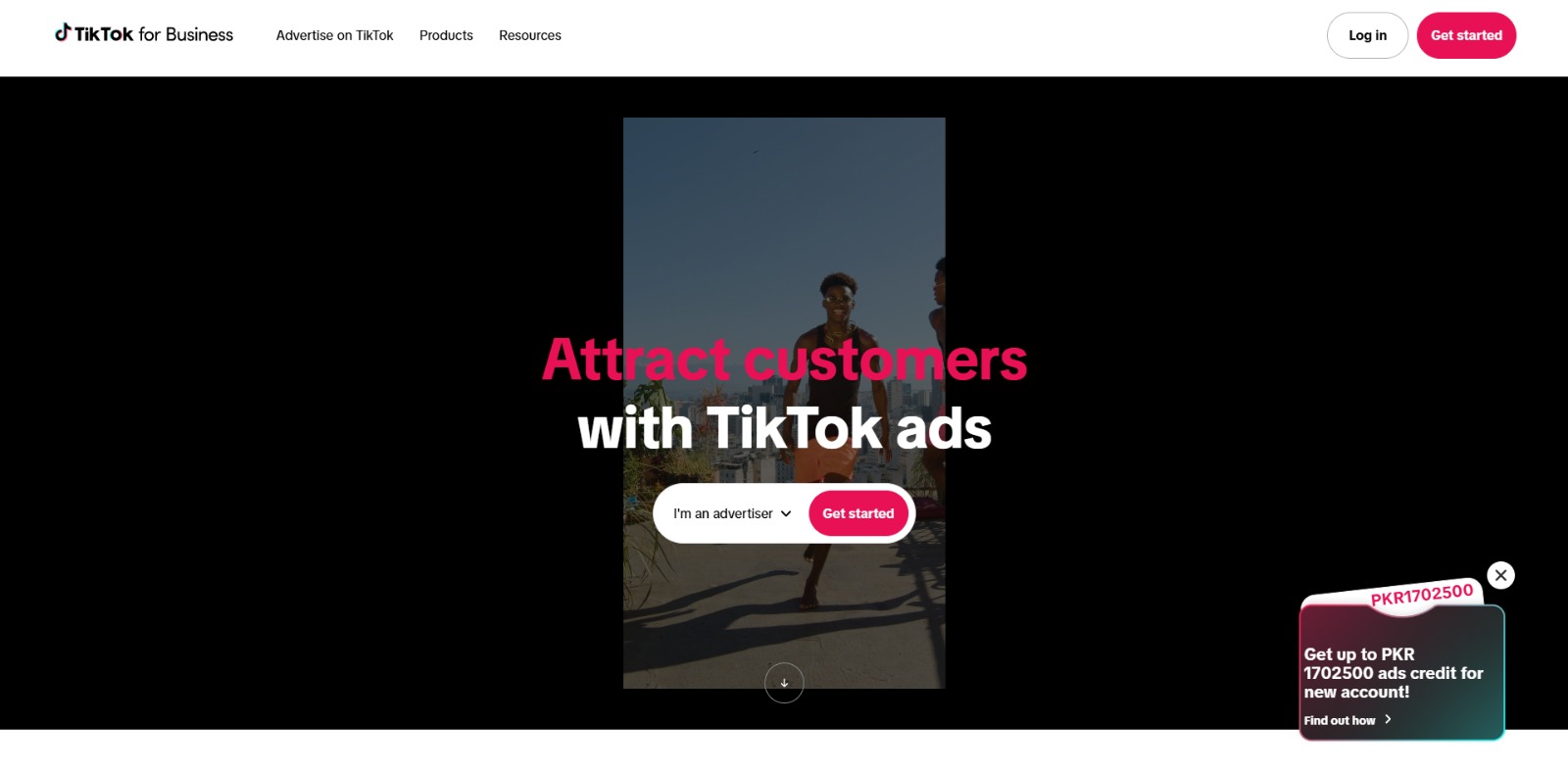
TikTok Ads lets brands tap into short-form video culture, driven byAI-powered discovery algorithms. With viral potential, TikTok campaigns can skyrocket awareness for lifestyle and consumer brands. Ad formats include In-Feed Ads, Spark Ads, TopView, and Branded Hashtag Challenges.
Pros:
- Viral Potential – Ads can scale organically.
- AI-Driven Targeting – Content delivered to the right audience.
- Strong Engagement – Short-form video resonates well.
- Creative Ad Formats – Multiple interactive ad options.
- Influencer Integration – Easy collaborations with creators.
Cons:
- Young Demographics – Best for Gen Z and Millennials.
- Creative Heavy – Requires high-quality, frequent content.
- Ad Approval Delays – Creative reviews can be slow.
- CPC Spikes – Rising costs in competitive niches.
- Constant Testing Required – Trends shift quickly.
Best For: Beauty, fashion, lifestyle, and viral-ready products. TikTok is a goldmine for brands aiming to generate buzz with short-form video ads. Perfect for targeting younger demographics who engage with trends and influencer-led campaigns.
9. Pinterest Ads
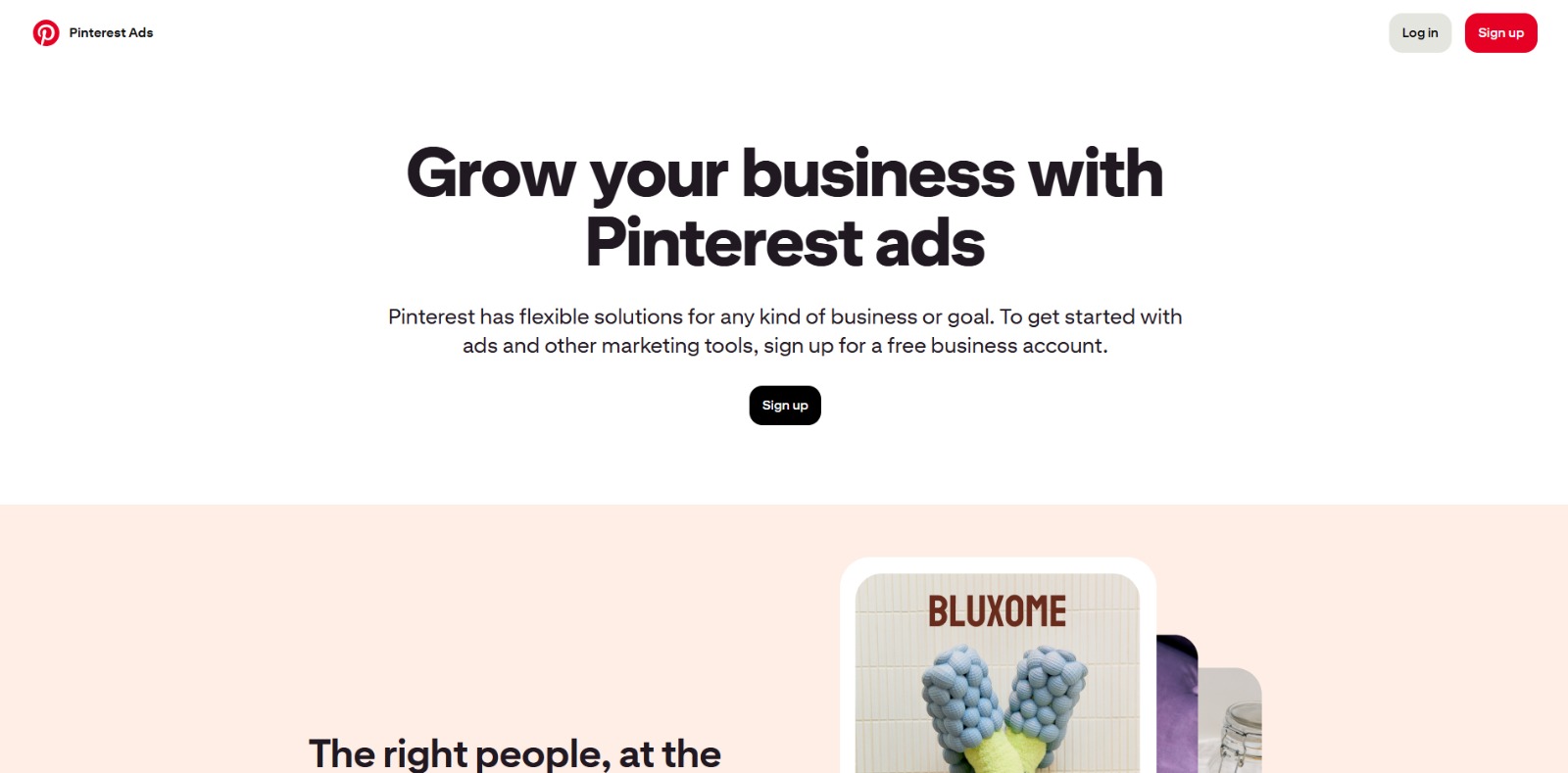
Pinterest Ads focus oninspiration-driven shopping where users search for lifestyle, fashion, home décor, and DIY ideas. With Promoted Pins, Shopping Ads, and Video Ads, brands can reach audiences who are in discovery mode but ready to shop.
Pros:
- High-Intent Discovery – Users actively search for inspiration.
- Long-Lasting Ads – Pins can drive engagement for months.
- Visual Audience – Strong for creative industries.
- Rich Product Feeds – Easy shopping integration.
- Good Conversion Rates – Especially for lifestyle brands.
Cons:
- Smaller Audience – Compared to Meta and Google.
- Seasonal Fluctuations – Traffic varies by trends.
- Limited Analytics – Fewer tools than Google Ads.
- Demographic Skew – More female-dominated audience.
- Creative Testing Required – Visual optimization is key.
Best For: Home décor, DIY, beauty, and fashion. Pinterest Ads shine for businesses that want to reach people actively searching for inspiration and lifestyle ideas. Its long-lasting pins make it especially powerful for seasonal and evergreen campaigns.
10. LinkedIn Ads
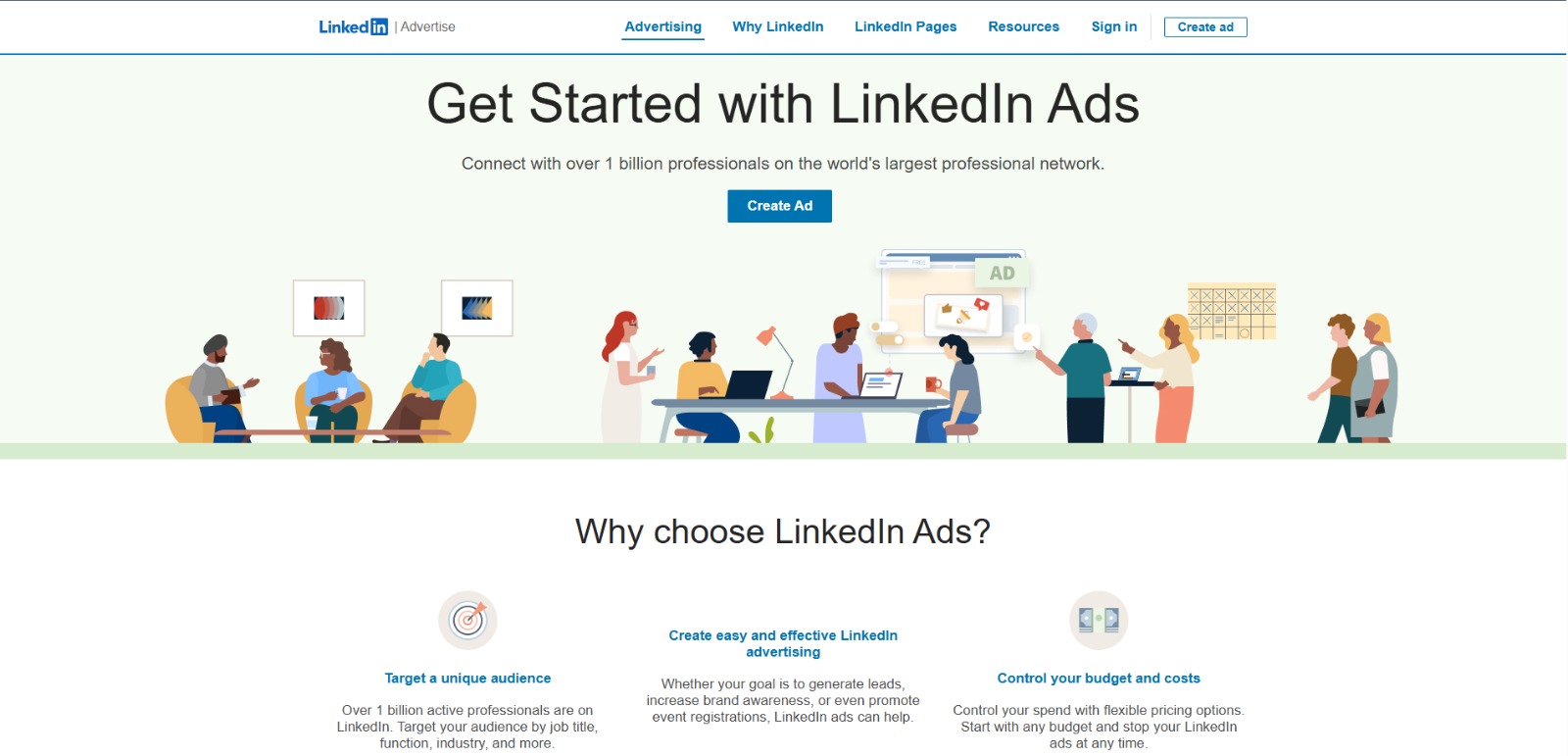
LinkedIn Ads provide access to a professional, B2B-focused audience that makes them especially effective for e-commerce brands selling high-value products, services, or targeting business buyers. With precise targeting options like job title, industry, company size, and professional interests, LinkedIn enables brands to reach decision-makers with buying power. Its ad formats include Sponsored Content, Message Ads, Text Ads, and Dynamic Ads, giving flexibility across the funnel..
Pros:
- Access to a high-quality, professional audience
- Advanced B2B targeting by role, industry, and company size
- Multiple ad formats, including Sponsored InMail and Dynamic Ads
- Strong lead generation tools (LinkedIn Lead Gen Forms)
- Trusted platform with high credibility for business-focused campaigns
Cons:
- Higher CPC compared to other networks
- Smaller scale for consumer-focused products
- Limited organic reach without paid boost
- Less effective for low-cost, impulse-buy items
- Requires a clear B2B or professional value proposition
Best For: B2B e-commerce, SaaS, professional services, and high-value products. LinkedIn Ads are ideal for brands targeting decision-makers, professionals, or niche industries. Perfect for campaigns focused on lead generation, brand authority, and high-ticket conversions.
Factors to Consider When Choosing an Ad Network
Choosing the rightad network is not just about where your competitors are spending money; it’s about matching the network’s strengths with your own business goals. Factors like your audience, product type, and funnel stage play a major role in determining success. For example, if your target demographic spends hours on TikTok, running search-only campaigns on Google won’t bring the same impact. Similarly, a brand selling everyday essentials might perform better on Amazon Ads than on Pinterest Ads.
Key considerations when evaluating ad networks include:
- Ad Formats & Creative Support – Some networks excel in short-form video or interactive content, while others focus on search or display ads.
- Performance Metrics – Look for platforms that provide CTR, CPC, CPA, and ROAS data to guide optimization.
- Integration with E-commerce Platforms – Compatibility with Shopify, WooCommerce, or BigCommerce helps streamline campaigns.
- Budget Flexibility – Minimum spend requirements, bidding strategies, and seasonal cost fluctuations can impact performance.
Forward-Looking Ad Network Trends for 2026
The advertising landscape is evolving rapidly, and e-commerce brands need to stay ahead by adapting to new technologies and consumer behaviors. From AI-driven targeting to retail media dominance, the trends shaping 2026 are set to redefine how businesses allocate their budgets and engage customers online.
- AI-Powered Optimization – Artificial intelligence is the backbone of modern ad delivery. In 2026, ad networks are using machine learning to predict high-value audiences, optimize bidding strategies in real time, and personalize creative assets to maximize ROI.
- Retail Media Growth – Retail giants likeAmazon, Walmart, and Target are dominating e-commerce ad spend by leveraging their massive customer data. Theseretail media networks allow brands to advertise directly within the shopping journey, creating higher purchase intent and measurable conversions.
- Short-Form Video Dominance – TikTok, Instagram Reels, and YouTube Shorts continue to outperform static ads, delivering stronger engagement and retention rates. With consumer attention spans shrinking, short, creative, and storytelling-driven videos have become the go-to format for e-commerce marketing.
- Privacy & First-Party Data – With updates likeiOS 17 and stricter GDPR enforcement, third-party tracking is less reliable. Brands that build strong first-party data pipelines—via email lists, purchase history, and website tracking—gain a competitive edge in targeting and personalization.
- Programmatic Expansion – Programmatic advertising is scaling across multiple channels, automating media buying, and reducing manual optimization. Cross-network campaigns powered by DSPs (Demand-Side Platforms) are saving businesses time while ensuring budget is directed toward the highest-performing placements.
Conclusion
Toselect the ideal ad networks for an e-commerce business in 2026, companies must prioritize precise audience targeting and maintain high-quality product feeds. Implementing multi-network funnel strategies ensures that campaigns reach customers at every stage of the buying journey, while utilizing first-party data strengthens personalization and improves conversion rates. Creative asset quality and optimized ad formats play a critical role in capturing attention, and accurate tracking, attribution, and measurement of KPIs allow marketers to evaluate campaign performance effectively. Networks such as Amazon Ads, Google Shopping, Meta Ads, TikTok, and programmatic DSPs provide scalable solutions for different budgets and product types.
By aligning campaigns with 2026 trends, including AI optimization, retail media growth, and short-form video dominance,e-commerce businesses can maximize engagement and ROI. Starting with small test campaigns, analyzing results, and scaling successful strategies ensures sustainable growth and high returns in a competitive digital marketing landscape. This approach enables marketers to optimize every stage of the funnel while leveraging cutting-edge technologies and ad platforms to drive measurable results and long-term profitability.
Frequently Asked Questions (FAQs)
What ROAS targets should I expect in 2026 for e-commerce?
In 2026, realistic ROAS (Return on Ad Spend) targets vary by network and product type. For mid-tier campaigns, a 3x–5x ROAS is common, while high-intent networks like Amazon Ads or Google Shopping can deliver above 5x. Proper audience targeting and high-quality product feeds are crucial to achieving these returns.
Do I need a big product catalog or a large audience?
A large product catalog is not always necessary. High-quality product feeds and accurate audience targeting often outperform sheer size. Even smaller catalogs with optimized listings can generate strong conversion rates.
Can I use multiple networks together for e-commerce campaigns?
Yes, using multi-network funnel strategies is highly effective. Combining Meta Ads, TikTok, and programmatic DSPs ensures coverage across awareness, consideration, and conversion stages, improving overall campaign performance.
How do I measure performance given privacy and attribution challenges?
Tracking has become increasingly complex due to the GDPR, iOS privacy updates, and restrictions on third-party cookies. Using first-party data, UTM parameters, and server-side tracking helps maintain accurate attribution and allows marketers to optimize ROI.
What are realistic cost benchmarks for ad networks?
Typical CPC (Cost Per Click) ranges include Google Ads ($0.50–$2), Meta Ads ($0.20–$1.50), and TikTok Ads ($0.30–$1.20). CPM (Cost Per Mille) varies by targeting, ad placement, and product category, which helps in budget planning.
How soon will I see results from ad campaigns?
Short campaigns can show results within 7–14 days, but multi-network campaigns may require 30–60 days to gather sufficient data for optimization. Patience ensures accurate evaluation of KPIs and overall campaign performance.
Are programmatic DSPs suitable for small businesses?
Programmatic DSPs provide advanced targeting, but smaller businesses may face higher minimum budgets and complex interfaces. However, integrating first-party data can make campaigns efficient even with limited resources.
Which ad networks are best for new e-commerce businesses?
For beginners, Meta Ads, Google Shopping, and Amazon Ads are ideal due to their user-friendly platforms and scalable targeting options. Testing these networks first helps in establishing effective ad funnels before expanding to other platforms like TikTok or Pinterest.
